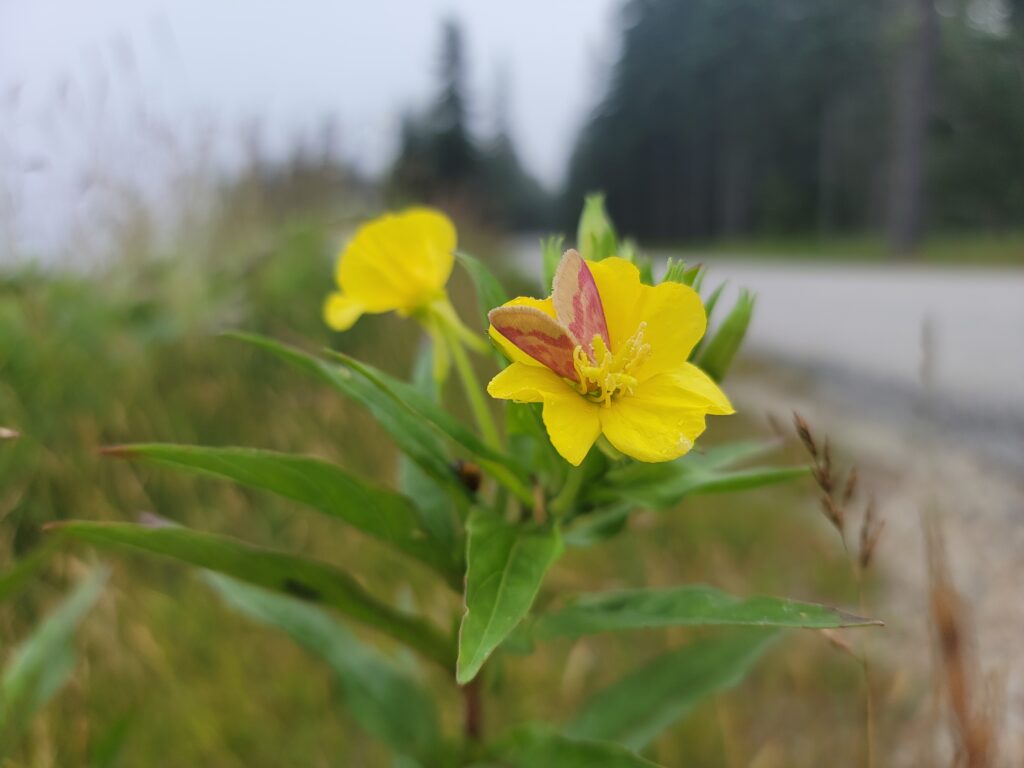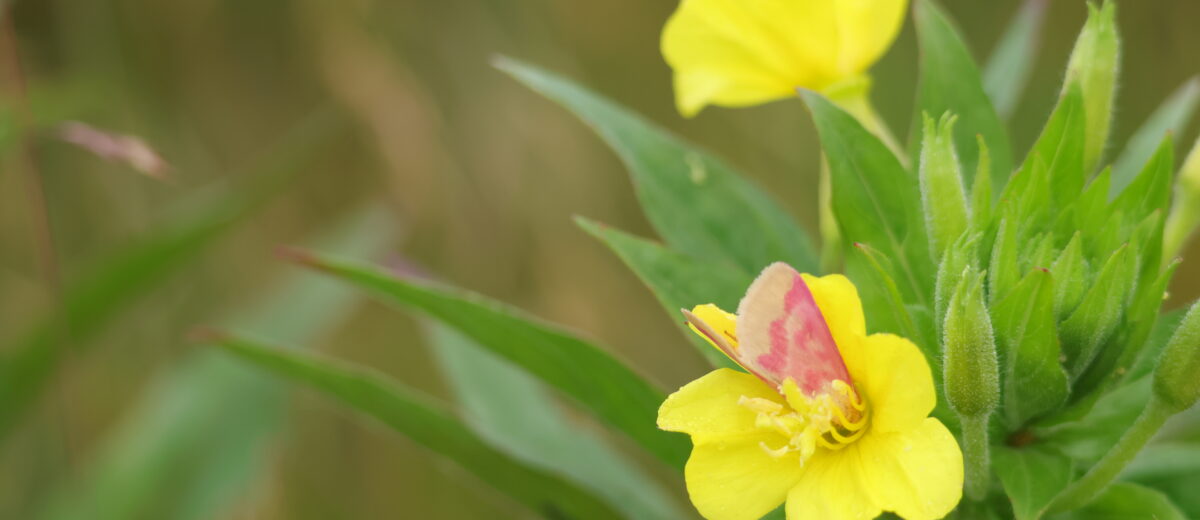story + photos by Catherine Schmitt
It could be easy to mistake the insect for a flower, to mistake the flower for a weed.
But look closer at that plant blooming along the edges of fields and roadsides: within the yellow petals of the common evening primrose rests a yellow and pink moth, the primrose moth.
Hatched from an egg deposited on a primrose flower bud, the moth spent last summer feeding on primrose buds and capsules before tunneling into the ground to cocoon for the winter. It coordinated its emergence as an adult with the blooming of the plant with which it shares both name and appearance – one of many plant-insect associations worthy of closer consideration during National Moth Week.
The relationship of monarchs and milkweed is by now familiar. Moths, too, have their preferences. How in the world does such a partnership, a coordinated timing of buzz and bloom, come to be? Science has answers, of course, but there’s more magic in the wonder of a moth that dozes away the day head-first in a flower.
“Most frequently it enters the cup-shaped corolla at night and the petals actually close over the moth with the coming of daylight,” wrote David F. Hardwick in the Journal of the Lepidopterists’ Society. “Usually only the yellow apical quarter of each forewing is left protruding beyond the petals, and these in their yellow coloring closely resemble the petals themselves. This behavior pattern is not an absolute one, however; not infrequently the little moth merely nestles among the blossoms, and the pink of the basal three-quarters of the wings so closely simulate the color of the dead but still clinging petals of Oenothera that even in this relatively exposed position, the moth is still difficult to detect.”
Difficult, but not impossible. To find the primrose moth, join the 1,200+ iNaturalist contributors who have learned to recognize the flower and then looked closer. Eight of the records are from Acadia National Park, not many but enough to confirm the persistence of a species found on Mount Desert Island by William Procter and Ironbound Island by Dwight Blaney a century ago.
The flowers are blooming now. Look closer. Surprise awaits in the yellow folds of the dew-drenched dawn.

